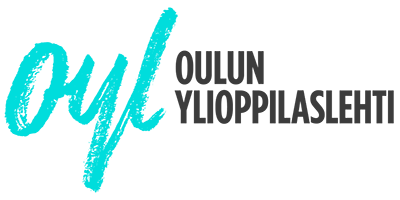“Moustafa, you need a break now. In order to be able to focus, I suggest going for a short walk or a five-minute meditation” says an artificial intelligence (AI) agent to me after continuous work that lasted for a couple of hours. Sounds like science fiction, does it not? Well, it isn’t! This is actually one of the recent applications of AI in well-being that is achieved by using different wearable sensors and Machine Learning (ML) models that learn from these sensors’ readings. AI and Data Science applications nowadays can guide students and employees to take a rest or relieve stress even when they do not feel they need it depending on their brain activity.
Are you a Facebook, Instagram, WhatsApp, or Messenger user? Were you affected by the 6 hours when all these apps were down? Have you ever thought about how social media can control our lives subconsciously? Being a student nowadays, we are almost always part of the Internet world. Most of the time we are connected to at least one online application whether attending lectures in Microsoft Teams, submitting homework using Google Docs, listening to music via Spotify, watching series via Netflix on our laptops, or scrolling through Facebook or Instagram feed.
In fact, and according to a Pew Research Center study, around 30% of experts voted that the always-connected life will be harmful to teens and families through the next decade. Meanwhile, 47% of the experts disagreed. They believe that this would serve the people’s well-being and a small percentage of experts believe that there would not be a noticeable difference. According to the same research, experts have concerns regarding the challenges the digital world and technology would result into such as the lack of analytical skills, losing the ability to focus for a relatively long time, and lack of general creativity towards generating solutions given that people will be always influenced by what they see and interact with in addition to the increase in stress, anxiety, and depression.
The more technology evolves the more hopes and fear arise. How we use technology controls the direction!
According to the Global happiness and well-being policy report published in 2019 by the Global Happiness Council, well-being has a clear correlation with the employees’ productivity and retention and as a result the whole working environment. With the help of technology, most of the companies and educational institutions were able to transform into remote work overnight. As much as that was beneficial on many different levels, it also helped in vanishing the line between the work and life balance. According to CNET news, and as of May 2021, there was a 2000% increase in weekend Zoom meetings and a 700% increase in weekday evenings’ meetings on the platform since February 2021. In addition, huge spikes in email usage between midnight and 3 AM were reported by the privacy app maker, SurfShark.
Other concerns were also regarding the direction the big tech giants are adopting based on scientific experiments on dopamine. They work on producing different products that activate this chemical in human bodies which makes the customers stick to these products subconsciously such as video games for teenagers. Other studies conducted by the UCLA brain mapping center, stated that certain brain regions of teenagers are highly triggered by the likes they receive on social media which is one of the most important reasons for social media addiction.
Technology can also have a positive impact on well-being in different areas and domains. In healthcare, for instance, wearable sensor devices and fitness trackers can help and save many patients by helping healthcare professionals monitor their patients on a daily basis preventing health problems way before they occur due to the different sensor readings and metrics.
In education, Natural Language Processing (NLP), which is one of the biggest areas under the umbrella of AI, can be used to customize classes to students based on their understanding levels and progress. The ridiculous routine of administrative matters can be solved and tackled using AI which can result in freeing more time for teachers and professors to interact with students directly.
In the job search journey, which has become an essential part of everyone’s life nowadays, technology and AI-based tools made great progress in matchmaking talents with the right opportunities for them. Recent studies proved that well-being and job security have a clear positive correlation.
Being an AI student and working as a data scientist, I can say confidently that there are a tremendous number of applications of AI and data science that can revolutionize the well-being world but it is all about who will have the right to use these applications, how they will use them and for what purposes. Having access to this amount of data and powerful applications can be tricky and lead to disasters in the wrong hands. On the other hand, maximizing the benefits of the digital world without being controlled by it will be one of the most important challenges that we need to accept, understand and work on a concrete solution for.
“Technology itself is not going to do anything if we are not empathetic. First, we need to understand the needs we are trying to address. And then technology can be in service of those needs.”
—Juliana Nunes, global head of HR, Enterprise Technology, Johnson & Johnson

